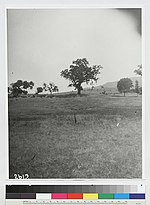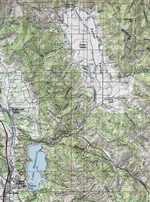Ackerman Creek
Ackerman Creek is a stream located in the U.S. state of California. It is located in Mendocino County.Ackerman Creek (Ya-mo bida - wind hole creek) runs through the Pinoleville Reservation in Mendocino County, and is of biocultural significance to the Pomo tribe of Native Americans. Ackerman Creek is central to Pinoleville Pomo cultural subsistence practices, as it is a source of water for the nation's sweat lodge, supports a salmon population, and its native vegetation is used in a variety of cultural practices including basketry.The Pinoleville Pomo Nation currently has restoration efforts underway to remove invasive species, propagate native species including steelhead, and conduct ongoing monitoring of ground water, surface water, vegetation, macroinvertebrates, fish, and birds.
Excerpt from the Wikipedia article Ackerman Creek (License: CC BY-SA 3.0, Authors).Ackerman Creek
Kunzler Ranch Road,
Geographical coordinates (GPS) Address Nearby Places Show on map
Geographical coordinates (GPS)
| Latitude | Longitude |
|---|---|
| N 39.178611111111 ° | E -123.19916666667 ° |
Address
Conrad Forest Products
Kunzler Ranch Road 650
95482
California, United States
Open on Google Maps










